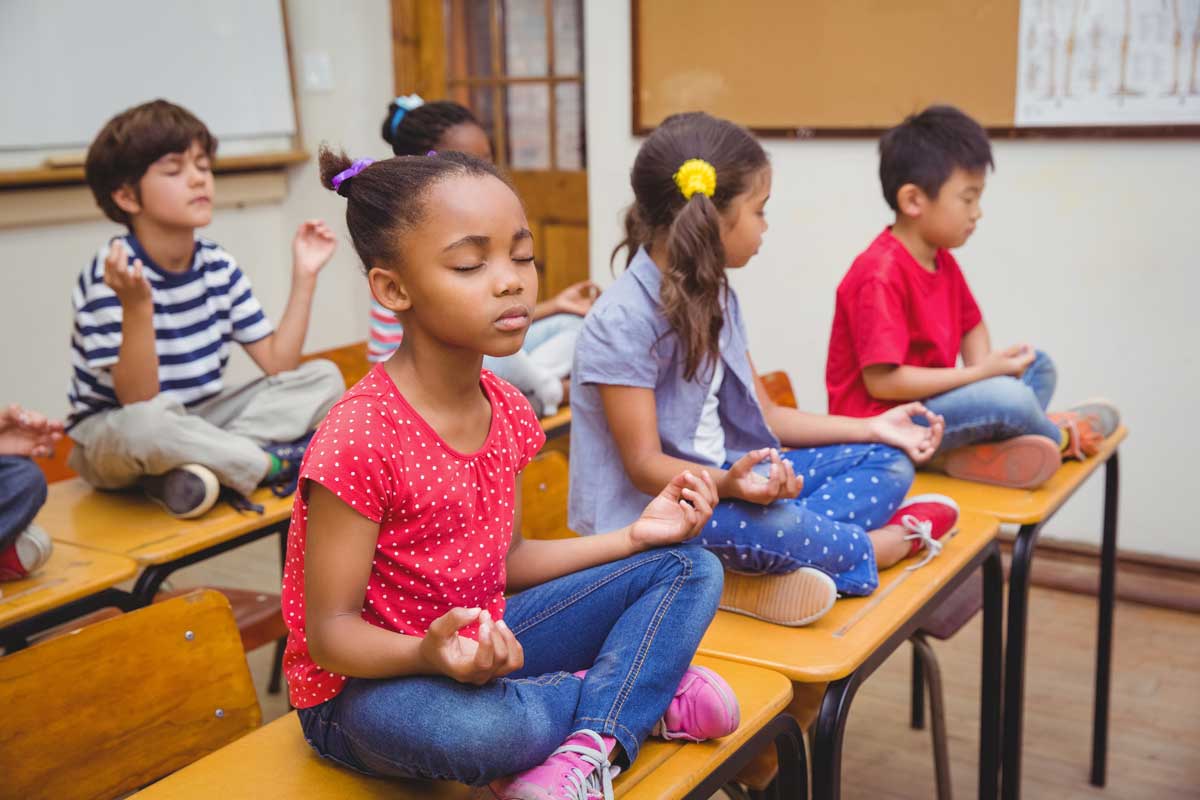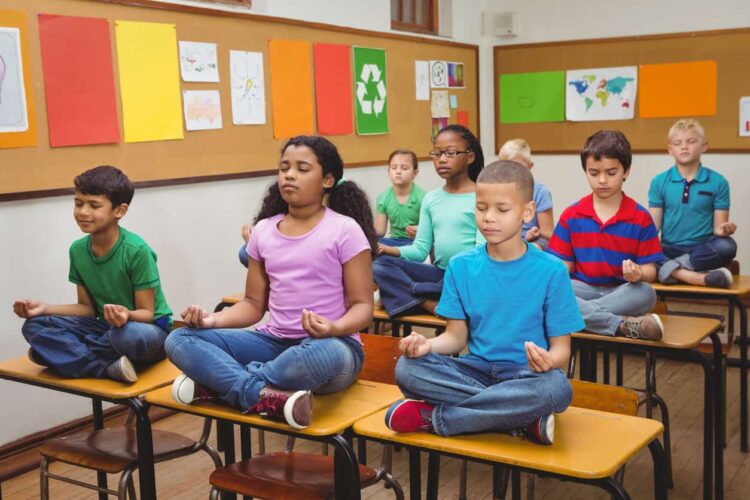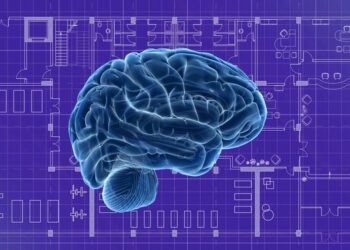What is Mindfulness?

Before delving into its benefits for students, it’s crucial to grasp what mindfulness truly entails. At its core, mindfulness is the practice of being fully present and aware of the current moment, without judgment. It involves paying attention to one’s thoughts, feelings, bodily sensations, and the surrounding environment with curiosity and acceptance. While meditation is a common practice used to cultivate mindfulness, it’s important to understand that mindfulness itself is a state of being that can be brought into any activity.
This concept isn’t new; its roots lie in ancient contemplative traditions. However, in recent decades, scientific research has increasingly validated its profound psychological and physiological benefits. For students, this translates into tangible improvements in various aspects of their academic and personal lives. It’s about developing an internal resource that allows them to navigate challenges with greater ease and clarity.
Why Mindfulness is Essential
Today’s students navigate a complex world rife with unique challenges that can significantly impede their learning and well-being. Understanding these pressures helps to highlight why mindfulness has become an indispensable tool for student success.
A. Information Overload and Digital Distractions: Students are constantly bombarded with information from social media, news feeds, and countless online resources. This digital deluge, while offering unparalleled access to knowledge, also creates a pervasive sense of distraction. The human brain is not designed to process such a continuous stream of stimuli, leading to fragmented attention and difficulty in deep learning. Mindfulness offers a counter-practice, helping students train their focus amidst the digital noise.
B. Academic Pressure and Performance Anxiety: The pressure to achieve high grades, gain admission to prestigious universities, and secure competitive internships is immense. This often leads to chronic stress, fear of failure, and performance anxiety, which can severely impact cognitive functions like memory and decision-making during exams and assignments. Mindfulness provides strategies for managing these anxieties and cultivating a more positive relationship with academic challenges.
C. Time Management and Procrastination: Many students struggle with effective time management, often falling into patterns of procrastination. This can be exacerbated by overwhelming workloads and a lack of clear strategies for breaking down tasks. Mindfulness helps students become more aware of their internal states that lead to procrastination and develop more disciplined approaches to their studies.
D. Social Pressures and Identity Formation: Adolescence and young adulthood are periods of intense social development and identity formation. Students face peer pressure, social media scrutiny, and the challenge of establishing their unique identities. These social dynamics can be emotionally taxing, diverting energy and focus away from academic pursuits. Mindfulness cultivates self-awareness and emotional regulation, helping students navigate these social complexities with greater resilience.
E. Mental Health Concerns: There is a well-documented rise in mental health issues among students, including anxiety, depression, and stress-related disorders. The demands of academic life, coupled with personal challenges, can significantly contribute to these issues. Mindfulness practices offer a proactive and preventative approach to mental well-being, helping students develop coping mechanisms and a greater sense of emotional balance.
F. Sleep Deprivation: The combination of academic demands, social activities, and digital device usage often leads to chronic sleep deprivation among students. Lack of adequate sleep profoundly affects cognitive functions, mood, and overall health. Mindfulness techniques, particularly those focused on relaxation and present moment awareness, can be powerful aids in improving sleep quality.
How Mindfulness Directly Boosts Student Success

The benefits of mindfulness for students are wide-ranging, impacting cognitive, emotional, and social dimensions of their lives. These improvements directly contribute to enhanced academic performance and overall well-being.
A. Improved Focus and Attention Span: One of the most immediate benefits of mindfulness is its ability to train attention. Regular practice helps students develop the capacity to sustain focus for longer periods, reduce mind-wandering, and minimize distractions. This directly translates to more effective studying, better comprehension during lectures, and improved performance on tasks requiring sustained concentration. Imagine a student able to fully absorb a textbook chapter without constantly checking their phone – that’s the power of mindful attention.
B. Enhanced Memory and Learning: When students are more present and focused, their ability to encode and retrieve information improves. Mindfulness reduces the cognitive load caused by stress and rumination, freeing up mental resources for learning. It helps in solidifying new information and recalling it more efficiently during exams. This isn’t just about rote memorization; it’s about deeper understanding and retention.
C. Stress Reduction and Emotional Regulation: Academic life can be inherently stressful. Mindfulness provides students with tools to recognize and respond to stress in healthier ways. By observing thoughts and emotions without judgment, students can create a sense of distance from overwhelming feelings, preventing them from spiraling into anxiety or panic. This ability to regulate emotions is crucial for maintaining calm under pressure, whether during a challenging assignment or a high-stakes exam.
D. Increased Resilience and Coping Skills: Life, including academic life, is full of setbacks. Mindfulness helps students develop resilience, the ability to bounce back from adversity. By cultivating acceptance of the present moment, even when it’s difficult, students learn that negative experiences are transient. This fosters a growth mindset, where challenges are viewed as opportunities for learning rather than insurmountable obstacles.
E. Better Decision-Making and Problem-Solving: A clear and calm mind is better equipped for effective decision-making. Mindfulness helps students pause before reacting, allowing them to consider various options and potential outcomes more thoroughly. This is particularly beneficial when facing complex academic problems or making important life choices regarding their education or future career paths.
F. Improved Self-Awareness and Self-Compassion: Mindfulness cultivates a deeper understanding of one’s own thoughts, feelings, and behavioral patterns. This heightened self-awareness is fundamental for personal growth. It also fosters self-compassion, encouraging students to be kind and understanding towards themselves, especially when they make mistakes or face difficulties. This reduces self-criticism and promotes a healthier self-image, which is vital for sustained success.
G. Enhanced Creativity and Innovation: A mind free from constant distractions and stress is more open to new ideas and novel connections. Mindfulness can unlock creative potential by allowing for a more expansive and less constrained thought process. This is invaluable in subjects requiring innovative solutions and original thinking.
H. Better Sleep Quality: As mentioned earlier, sleep deprivation is a major issue. Mindfulness practices, particularly body scans and breath awareness exercises, can help calm the mind and body, making it easier for students to fall asleep and experience more restorative rest. Improved sleep directly translates to better concentration, mood, and overall academic performance.
I. Improved Interpersonal Relationships: While the focus is often on individual benefits, mindfulness also positively impacts social interactions. By fostering empathy and non-judgmental awareness, students can develop more compassionate and understanding relationships with peers and teachers. This can lead to a more supportive learning environment and improved collaborative work.
Integrating Mindfulness into the Student Experience
For mindfulness to truly aid student success, it needs to be integrated practically into their daily routines and educational environments. This can be done through various accessible methods.
A. Short Guided Meditations: Even a few minutes of guided meditation each day can make a significant difference. Many free apps and online resources offer short mindfulness exercises specifically designed for students, focusing on breath awareness, body scans, or sound meditations. These can be easily incorporated before studying, during breaks, or as a way to unwind before sleep.
B. Mindful Breathing Exercises: Teaching students simple breathing exercises – such as deep belly breathing or counting breaths – provides them with an immediate tool to calm their nervous system during moments of stress or anxiety. These can be practiced discreetly anywhere, from the classroom to an exam hall.
C. Mindful Movement: Incorporating mindful movement, even short stretching or yoga sequences, can help students connect with their bodies and release tension. This is particularly beneficial for those who spend long hours sitting and studying. Schools can offer short movement breaks or integrate mindful stretching into physical education.
D. Mindful Eating: Encouraging students to eat mindfully – paying attention to the taste, texture, and smell of their food – can enhance their appreciation for meals and promote healthier eating habits. It also serves as another opportunity to practice presence in a daily activity.
E. Mindful Walking: Transforming the act of walking between classes or to and from school into a mindful practice involves paying attention to the sensations of walking, the sounds, and the sights around them. This can be a refreshing break from cognitive demands.
F. Digital Detox Periods: Encouraging students to establish regular periods of “digital detox” – time away from screens and notifications – can significantly reduce mental clutter and improve focus. Mindfulness can provide the internal calm needed to resist the urge to constantly check devices.
G. Mindfulness in the Classroom: Teachers can integrate short mindfulness moments into the school day, such as a one-minute breathing exercise before a test or a brief mindful listening practice before a discussion. This normalizes the practice and helps create a calmer learning environment.
Challenges and Considerations in Implementing Mindfulness for Students
While the benefits are clear, widespread implementation of mindfulness in education faces certain challenges and considerations:
A. Teacher Training and Buy-In: For mindfulness to be effectively integrated, educators need proper training in both personal practice and pedagogical methods. Gaining buy-in from teachers and school administration is crucial, as their enthusiasm and understanding are key to successful implementation.
B. Curriculum Integration: Finding space within an already packed curriculum can be a challenge. Mindfulness needs to be integrated thoughtfully, not as an add-on, but as a foundational skill that enhances all other learning.
C. Measuring Effectiveness: While qualitative benefits are often apparent, objectively measuring the impact of mindfulness on academic outcomes can be complex. Robust research is needed to provide quantifiable data that supports its widespread adoption.
D. Parental Understanding and Support: Some parents may be unfamiliar with mindfulness or hold misconceptions. Educating parents about the scientific basis and benefits of mindfulness is important to garner their support and avoid resistance.
E. Addressing Specific Student Needs: Mindfulness practices may need to be adapted for students with specific learning disabilities or mental health conditions. A “one size fits all” approach may not be effective for everyone, requiring sensitivity and flexibility.
F. Sustainability of Programs: Ensuring the long-term sustainability of mindfulness programs requires ongoing funding, consistent training, and continuous evaluation to adapt and improve based on student needs and feedback.
Conclusion
The growing evidence base and the increasing global focus on mental well-being suggest that mindfulness will become an increasingly integral part of educational systems worldwide. The future of education is not just about imparting knowledge; it’s about nurturing the whole student – intellectually, emotionally, and socially.
Imagine classrooms where students enter with a sense of calm, ready to learn, rather than being overwhelmed by distractions or anxiety. Picture students navigating academic challenges with resilience, self-compassion, and the ability to focus deeply on their tasks. This isn’t a utopian vision; it’s a tangible outcome of integrating mindfulness into the fabric of education.
As technology continues to advance and the demands on students evolve, the internal resources that mindfulness cultivates – attention, emotional regulation, and resilience – will become even more critical. Equipping students with these skills is not just about helping them achieve higher grades; it’s about preparing them to lead more balanced, fulfilling, and successful lives, long after their academic journey concludes. Mindfulness is an investment in human potential, fostering a generation that is not only smart but also wise, compassionate, and truly present.












